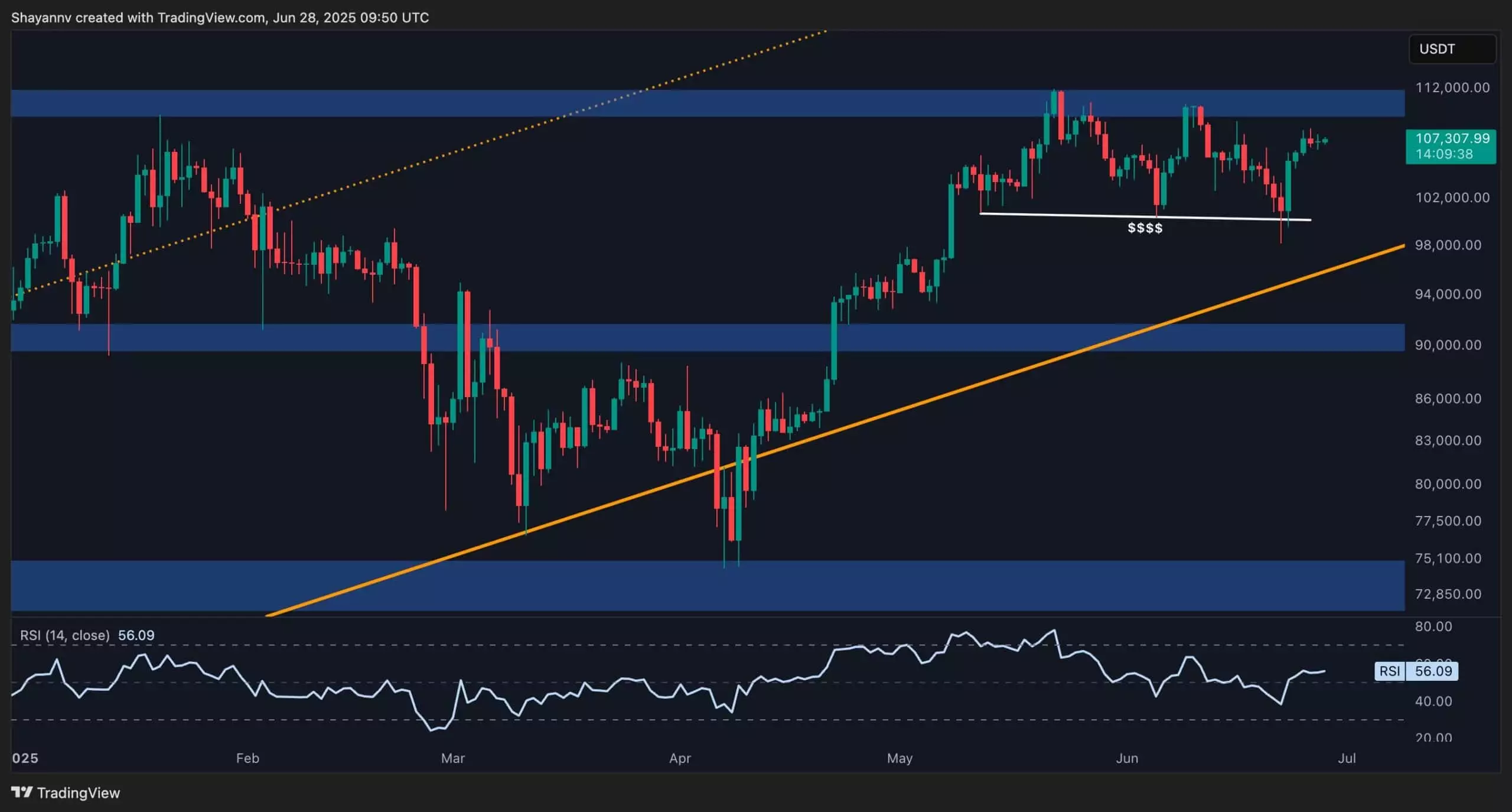Bitcoin’s current price dynamics reveal a frustrating reality: despite the strong hype for a rally beyond its previous all-time high, the cryptocurrency’s momentum is faltering near critical resistance zones—particularly around the $111K mark. This region represents a symbolic and technical barrier that Bitcoin has yet to decisively breach, and several weeks of sideways consolidation have demonstrated just how tough this challenge is. Instead of mounting a robust breakout, what we are witnessing is a tug-of-war where bulls struggle to maintain control against profit takers and opportunistic sellers. The repeated inability to push through this resistance is not a minor hiccup; it suggests that the euphoria surrounding the next bull run might be premature without a significant shift in demand fundamentals.
The Illusion of Demand—Why a Breakout Remains Elusive
The cryptocurrency’s recent dip below $100K, which some might interpret as a bearish sign, instead may be best understood as a necessary liquidity sweep—an event that clears weak hands and fuels potential upward moves. Yet, even after this shakeout, Bitcoin’s rebound has barely reached $107K, showing signs of flagging energy. Chart patterns like the bullish flag near this level traditionally signal continuation, but the current low volatility hints at dwindling conviction among buyers. Without a renewed influx of fresh demand or capital, the price is unlikely to break free from its trading range. This stagnation is more than just a technical blip; it exposes the market’s vulnerability to exhaustion after months of rapid gains, casting doubt on whether the previously assumed stable upward trajectory can continue.
Exchange Reserves Signal a Changing Investor Psychology
One of the most promising undercurrents is the steady outflow of Bitcoin reserves from centralized exchanges to private wallets. Data shows that reserves have plunged to multi-year lows—a trend that skeptics might dismiss as marginal, but which actually indicates a significant shift in investor behavior. This migration reflects a growing preference for self-custody and the accumulation mindset, rather than quick trading and short-term profit extraction. From a macro perspective, fewer coins being liquid and readily available on exchanges typically presage less downward pressure on price and can create conditions ripe for supply shocks. Yet, the important caveat is that this is a structural, long-term positive rather than an instant trigger for price surges—underscoring how fundamental shifts often await corresponding spikes in demand before manifesting as tangible price moves.
The Dangerous Consequences of Overreliance on Technical Optimism
Bitcoin markets have long been obsessed with chart patterns and technical signals—ranging from bullish flags to Fibonacci retracements—but this trust can sometimes breed complacency. In the current context, the persistent belief in an imminent breakout above $111K may lull participants into ignoring broader risks. These include potential macroeconomic headwinds, regulatory uncertainties, and the psychological impact of stalled gains. When bullish technical patterns do not translate into actual buying pressure, a dangerous vacuum emerges that can precipitate sharp corrections. Relying solely on technical optimism without factoring in demand dynamics and macro conditions risks misreading the market’s appetite and could lead to costly surprises for investors.
The Imperative for Fresh Capital Inflows and Rational Appraisal
Ultimately, Bitcoin’s near-term trajectory hinges on the arrival of new buying interest substantial enough to overpower entrenched resistance. Absent this, the price likely retraces toward established support levels around $100K, reinforcing a frustrating “range-bound” status quo for months on end. While the structural picture—fueled by shrinking exchange supply and growing accumulation—is undeniably bullish in the grand scheme, the present technical landscape warns against unbridled optimism. For market participants guided by center-right liberal sensibilities—which emphasize individual responsibility, rational assessment, and capital stewardship—it’s essential to approach Bitcoin with vigilance: one should harness its growth potential without discounting its volatility and ongoing challenges.
In the end, the cryptocurrency is navigating a transitional phase where foundational strength battles against a lack of immediate demand, and only those with a disciplined, data-driven outlook will successfully parse the market’s true signals.















